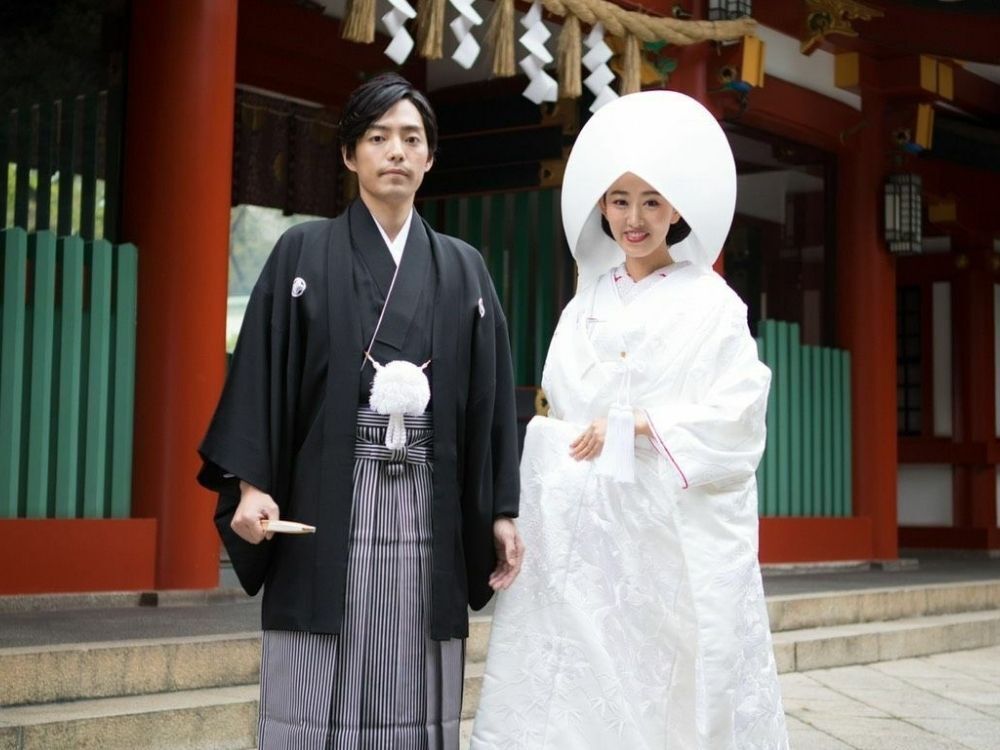### For Brides:
1. **Shiromuku**:
- **Description**: The Shiromuku is a traditional wedding kimono that is completely white, symbolizing purity and maidenhood. It is typically worn for Shinto-style weddings.
- **Components**: The outfit consists of a white kimono (uchikake or kakeshita), a white obi (sash), and a white hood called a "wataboshi," which is similar to a veil. Some brides may also wear a "tsunokakushi," a fabric piece meant to hide the "horns of jealousy" and to symbolize the bride's intent to become an obedient wife.
2. **Iro-uchikake**:
- **Description**: The Iro-uchikake is a brightly colored over-kimono worn over the white kimono, often adorned with elaborate designs featuring birds, flowers, and other auspicious symbols.
- **Components**: It is worn open, to display the intricate layers underneath, and is often very ornate and heavy, adding to the regal look of the bride.
3. **Furisode**:
- **Description**: This is a style of kimono featuring long, flowing sleeves that are often worn by unmarried women. Some brides choose to wear a furisode with a bridal obi for a less formal but still traditional wedding look.
- **Components**: The furisode is usually very colorful and decorative, contrasting with the more subdued shiromuku.
### For Grooms:
1. **Montsuki Hakama**:
- **Description**: This is the traditional attire for a groom in a Shinto wedding.
- **Components**: The outfit includes a kimono, which has family crests known as "montsuki" printed on the fabric, worn under a pleated skirt-like trousers known as "hakama." The ensemble is topped with a "haori," a formal jacket.
- **Colors and Patterns**: The colors are typically black and grey, which are considered formal and dignified.
2. **Western Suits**:
- **Description**: In modern times, many grooms opt for Western-style suits as a simpler or more contemporary alternative, especially in non-Shinto ceremonies.
### Accessories:
- **Kanzashi**: Hair ornaments used in traditional hairstyles, which can be very elaborate depending on the complexity of the hairstyle and the formality of the wedding.
- **Tabi**: White split-toe socks worn with traditional footwear, such as zori or geta.
### Hair and Makeup:
- Traditional hairstyles and makeup are an essential part of the wedding attire, with makeup usually being subtly elegant to emphasize the natural beauty and purity.
These traditional garments are rich in symbolism and are chosen carefully to reflect values such as purity, beauty, and respect for cultural traditions.

573 × 860
Source:129KB
750 × 1000
Source:89KB

900 × 600
Source:90KB

500 × 375
Source:28KB

900 × 600
Source:84KB

1390 × 866
Source:317KB

735 × 980
Source:96KB

569 × 859
Source:555KB

1000 × 667
Source:90KB

2070 × 3000
Source:594KB

